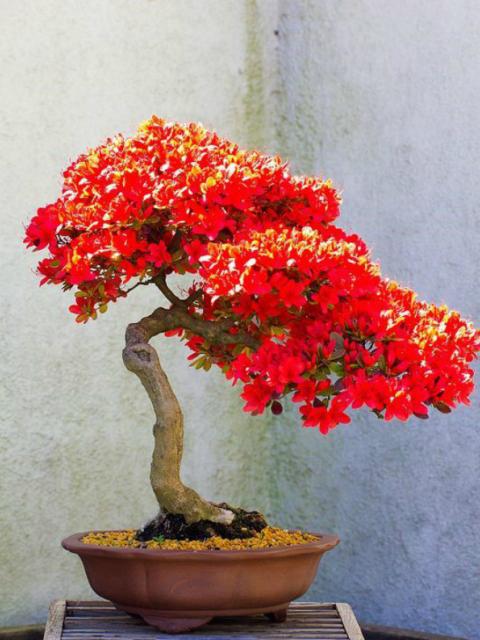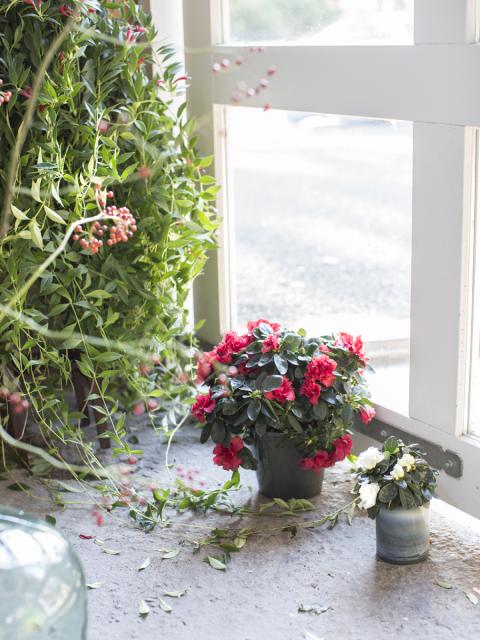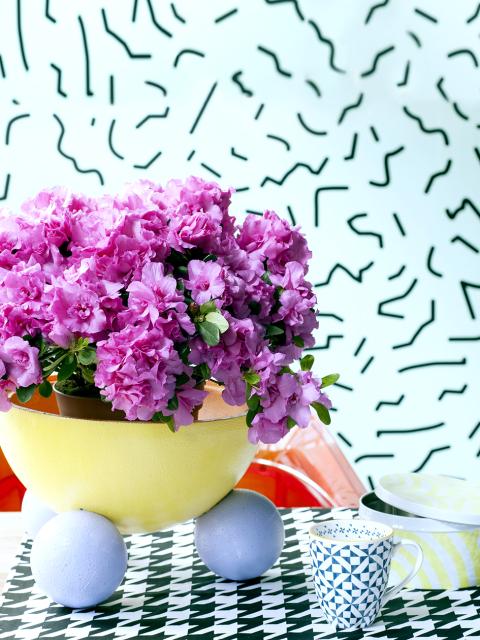Colours and shapes
The Azalea’s cheerful, flamboyant flowers are an excellent remedy against the dark days before Christmas. It flowers vigorously and elegantly, on plants with the familiar bush shape, but which are also available as a mini, pyramid or standard. The romantic flowers are white, pink, red or crimson, but there are also Azaleas with bicoloured flowers that vary in shape from large to small and from double to single. They can produce such a profusion of flowers that you will hardly see the green leaves.
Symbolism
The name is derived from the Greek word 'azaleos', which means dry and probably refers to the plant’s woody branches. In China the Azalea is known as the ‘I’m thinking of home bush’. The Azalea is also the national flower of Nepal and is referred to in the country’s ancient medical texts. In Japan, giving someone an Azalea symbolises giving them happiness.

Origin
The original versions of the Azalea have been around for 70 million years and there are currently more than 150 varieties. The plant is native to Japan and China, and is a member of the Rhododendron family. The colder the region, the smaller the flower, but the Azalea is a tough plant which even grows - and manages to flower - in the Himalayas. Admittedly, this is at a low altitude and with mini-flowers, but there are plenty of them, creating fields of pink flowers. The houseplant familiar to us in the West was originally cultivated by Buddhist monks. As far as we know the Azalea appeared in the Netherlands for the first time in 1680, when the plant was imported on Dutch East India Company ships.










